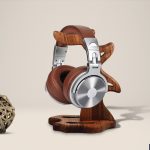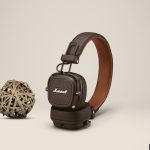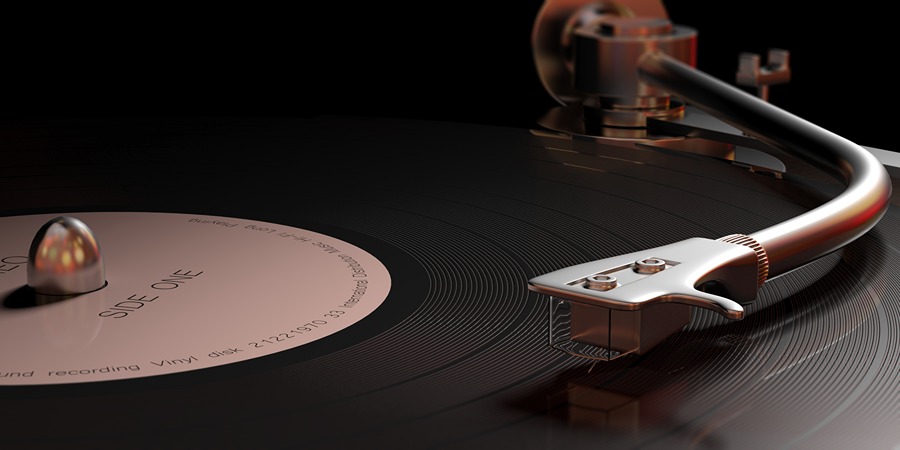
Back in 1877, Thomas Edison was the first one who invented the sound reproducing device in a metal cylinder form. Vinyl record players are also known as “gramophone” and still to this day is counted as a bougie style of music listening.
Vinyl is considered the most sophisticated and classical form of music entertainment. The question is how does this thing work?
The gramophone record and previously-stored sound mechanically are etching sound waves. If it’s described more precisely, the electrical pattern of the sound waves goes onto a copper cylinder with a needle.
The needle constantly moves to create a groove into the tin foil while the cylinder was revolved by a manual crank, recording signals from the soundwave.
Before all this highly developed digital era, there was a simplified vinyl. Let’s break into the most important pieces the body parts in the vinyl record players:
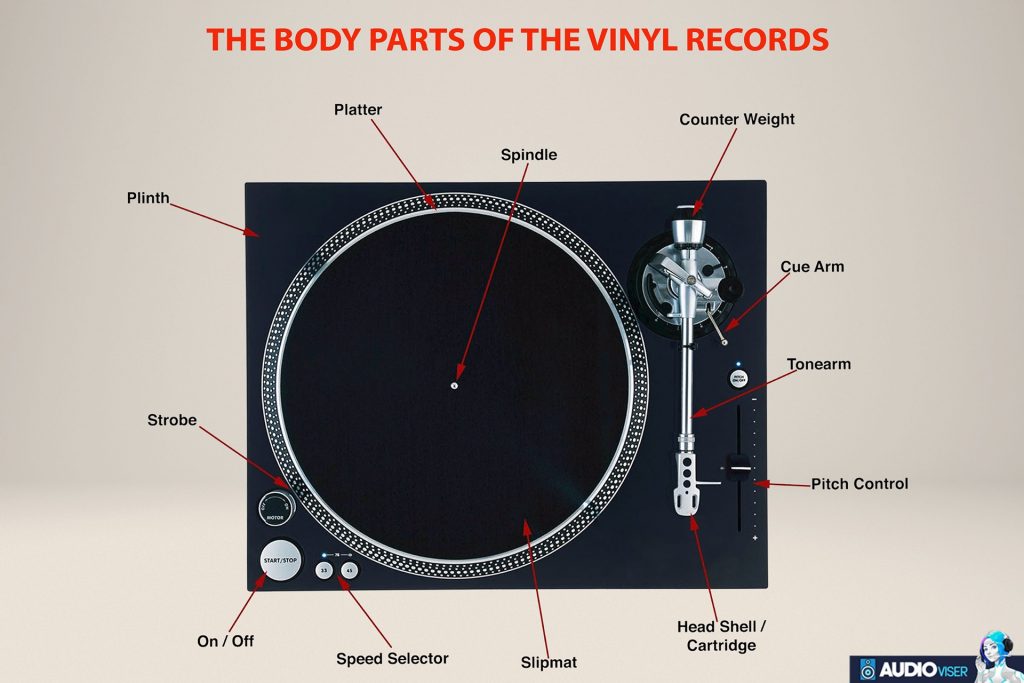
- Turntable or Platter- is the place where we put the records and the rotation occurs.
- Tone Arm– is the stick form where you play or stop the music with its sharp needle.
- Cartridge– is magnetic built-in and is wrapped around a corded coil attached to the stylus.
- Stylus– is the needle piece of the vinyl which is usually made out of sapphire or diamond. The stylus starts to vibrate in a second after it touches the small cut grooves.
How Do Vinyl Records Work: Explanation
What are Soundwaves & How do they Contribute to the Vinyl Records

In order to understand how vinyl works, it should be pure and clear how the soundwaves work.
To sum up, in the simplest way, the soundwaves are mechanical waves that are the outcome or effect of moving particles. The soundwaves travel back and forth and vibrate. The massive the vibrations are, the louder the noises get. This is how the soundwaves come into life.
Returning to our vinyl records and their operation, we need to examine the grooves. If you’ve already looked at the surface of a vinyl record, you’ve probably noticed how each disc has helical grooves running from the external borders to the center.
All those grooves are sound waves etched on the vinyl layer, acting as a pointer to the sound collected on the disc. These grooves control how sound waves behave as they travel through the air, resulting in the music we listen to.
How Do Vinyl Records Make Sound? From the First Stage to the Last
The Turntable Spin Around the Vinyl

The eye-catching thing at a first glance in vinyl is the turntable or call it a platter. It constantly rotates at a specified speed. The speed is defined by the diameter of the record.
Simply put when the record spins it creates sound vibrations.
LPR which stands for Long Play Record usually has a 12-inch disc size. They spin at a certain speed which is 33 1/3 revolutions per minute (RPM). Most of the discs are 10 inches and run at 45 RPM speed.
Remember, the spinning speed determined how long is the vinyl record.
The Stylus Comprehends the Record

When the spinning process starts, a tonearm gets low and the stylus touches the disc. You have to set it manually because it’s not digital, nothing is done automatically.
To set it accordingly, make sure the stylus touches the edge of the disc. As the disc is spinning, the stylus moves and bounces backward and forward following the record’s “fingerprint”.
The Tonearm Sends Mechanical Signals to the Cartridge
The mechanical signals are sent to create electrical signals in simple words. The tonearm gathers up the vibrations from the needle called the stylus and sends them to the cartridge.
The tonearm is built-in from a metal bar that feels like featherlight.
Mechanical Energy Is Converted To Electrical Power By The Cartridge
The cartridge contains a piezoelectric crystal or a magnet and coils to make a marked switch from mechanical to electrical energy. Then the electrical energy is shifted to an amplifier. All these processes create sounds.
How the Vinyl Album or Single is Made?
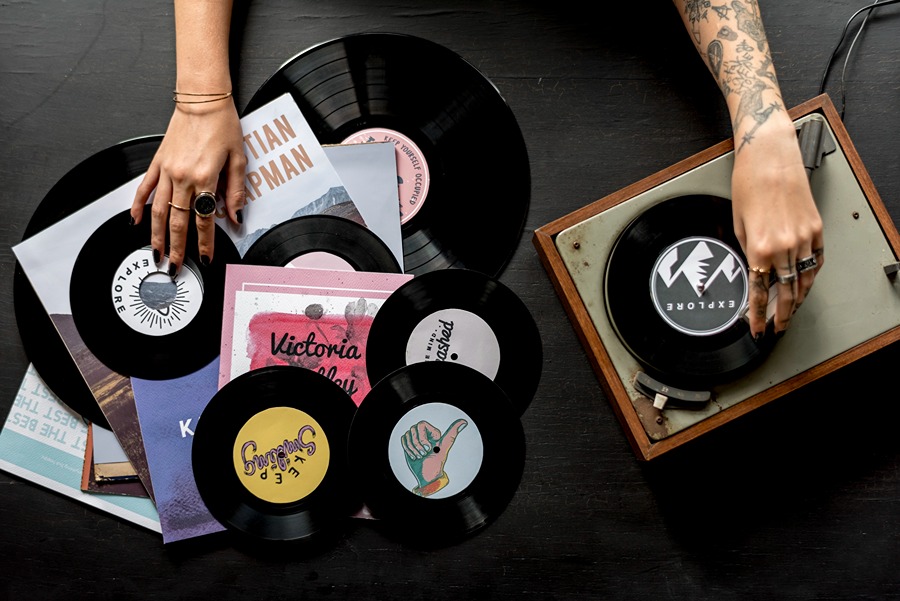
We’re so thankful for this digital era because everything is done digitally and less effort is left but this isn’t the case with vinyl records. It’s head-scratching how a tiny little needle creates such a big sound. The used method is interesting enough and somehow gives a better experience than those surround sound speakers.
It’s really intriguing how vinyl record players produces music. It goes through a 5-step process until it comes to the final stage of releasement. Let’s see how the albums are done back then
- The sounds are sent through the record cutting machine “lathe”. These machines are specifically designed for vinyl music and the price range is inexpensive.
- The lacquer is a building bridge between the recorded audio and the completed record. For sound adjustment, a lacquer disk is cut with grooves to look exactly equivalent to the sound waves.
- The finalized disk is copied in a stamp form and compressed.
- As a final stage, the records go through a test to check out whether there are any issues, and then it is stored in custody.
Final Thought
All the old pieces of technology die, but vinyl will never get old. Vinyl is a sophisticated way of music listening that none a single speaker can replace the value.
It seems to me that it will never go out of style, even after decades have passed. Since we love vintage stuff and sometimes want to back to these days and get away from the digital era, vinyl is the first item that comes into mind.
Vinyl is made out of many parts, but the most important pieces are a turntable or platter, tone arm, cartridge, and stylus.
The vinyl record players are simple and complicated at the same time. The first stage of vinyl music reproduction begins when the turntable spins around the vinyl. The second step is when the stylus starts to read the record. In the third stage, the tonearm sends mechanical signals to the cartridge and converts the mechanical energy to electrical energy.
You might wonder what is so special about vinyl records. First, hands down because they sound amazing and secondly, it has a lossless format type, meaning no sound quality is lost during the recording phase.
The created electric signal is similar to the original music because the magnet is traveling in the same direction that we illustrated in the music’s wave pattern.
Further Reading
Not only this but there are a bunch of other blogs you can read from.
For example, there is a brand comparison, I love those two brands can’t lie. Harman Kardon Vs. Bose.
There’s also a SteelSeries Arctis Prime review, and another one would be the Razer Barracuda X review.
Audio Engineer
You’ll never find anyone more passionate about audio as me. I love to share my knowledge with others and help people find the right equipment for them.



